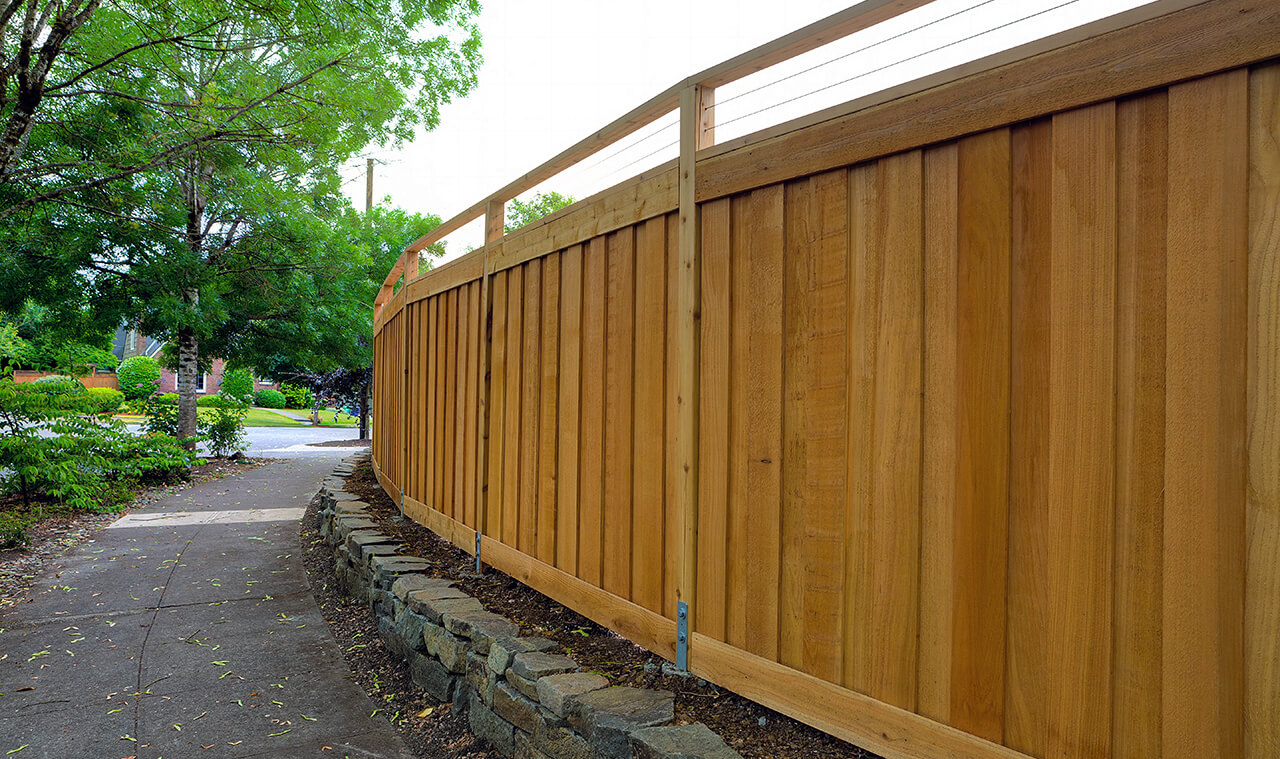- Comparing Fence Types
What’s the Safest Fence Type for Your Family?
If you have young children and/or pets in your family, you’ll want a fence. Not only will a fence serve as a safeguard during playtime to prevent young ones from wandering, but it’ll also protect them from prying eyes and give you peace of mind. Here are our expert tips for fence selections along the Front Range that will help keep your family safe at all times.
If you have young children and/or pets in your family, you’ll want a fence. Not only will a fence serve as a safeguard during playtime to prevent young ones from wandering, but it’ll also protect them from prying eyes and give you peace of mind. Here are our expert tips for fence selections along the Front Range that will help keep your family safe at all times.
Cedar Fencing
Cedar fencing is a wonderful option for families wanting to design an all-natural home and yard. Not only is cedar itself 100% natural to the environment, but it also doesn’t require harsh chemical treatments to maintain. While cedar fencing will eventually splinter over time, its natural oils protect it from decay and insect attacks for years.
Vinyl Fencing
Although vinyl fencing is less natural in that it’s made from PVC resin and other special ingredients to give it extra durability, vinyl doesn’t warp, rot, or splinter, making it a tactilely safe material for children to play near. Vinyl is one of the longest-lasting fence types. Additionally, vinyl fences are constructed so that hardware is completely encased, which means that no nails, screws, or other sharp edges are exposed.
Trex Fencing
Like vinyl, Trex fencing doesn’t rot or splinter. It’s also, however, more environmentally friendly since it’s made of recycled plastic and reclaimed wood, and chlorine isn’t a part of its make-up. The surfaces of Trex fences are smooth, and hardware is concealed to prevent scratches and exposure to sharp materials.
Which Types of Fences to Avoid
Fence materials that don’t work as well for families concerned about safety include iron, chain link, and masonry. While iron fences are a masterpiece of decorative elegance, they can chip and rust over time without proper maintenance routines, making them hazardous to families with young children.
Related: 8 Types of Fencing Compared
Chain link fences, while practical and affordable boundary line delineations, can expose sharp edges if torn; they are also easily scalable, making them risky for children who love to climb.
Although it’s difficult to compete with the stately grandeur of masonry fences, the stone can be quite rough and sometimes jagged, increasing the possibility of scrapes and cuts.
Related: What is Sprinkler Insurance (and Why Should I Get it?)
Fence Height, Spacing, and Age
As you consider installing a fence for your family’s safety, remember that it’s smart to increase your fence height so that it can’t be climbed or peered over easily, to position pickets close together so that children and small pets can’t get themselves stuck or injured, and to repair or replace any damaged materials that may expose sharp edges.
